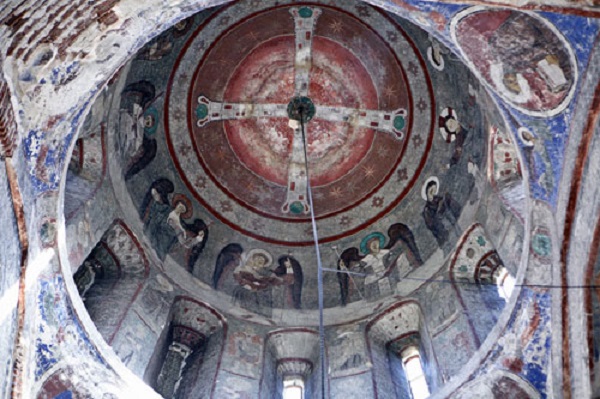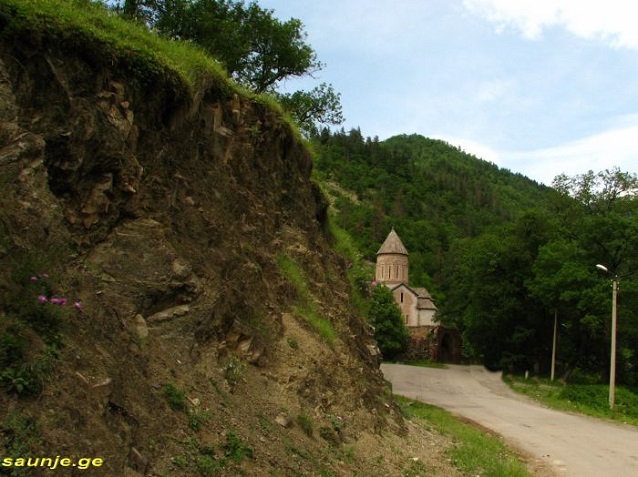Timotesubani Monastery: 800 years of glorious history

Worshipers from around the country are gathering in Borjomi today to mark the 800th anniversary of Timotesubani Monastery.
The solemn celebration began yesterday with a documentary presentation outlining the poignant history of the Monastery. Today’s festivities include a holy liturgy tonight, led by the Catholicos Patriarch of Georgia Ilia II, before the celebration continues outdoors.

The celebration marking the 800th anniversary of Timotesubani Monastery began yesterday. Photo by www.saunje.ge.
The beautiful Timotesubani Monastery, also called the Cathedral of the Holy Virgin, is a cross-cupola church built in 12-13th Centuries. It is located in Timotesubani village in the Borjomi Gorge, in Georgia's Samtskhe-Javakheti region.
The interior of the church is decorated with best examples of Georgian mural painting of the 13th Century. Originally the church had a blue roof, as the colour blue was highly appreciated during the Middle Ages, but now it has been reverted to a stone-coloured hue.
On the first day of celebrations was an exhibition of paintings by local artist Omar Chkhaidze at the Culture and Art Centre, supported by the Borjomi Municipality cultural service. The expo also featured part of a photo exhibition by historian Bakur Gelashvili, titled Borjomi and Bakuriani Diocese.
The exhibition was opened by the Metropolitan Seraphim of Borjomi and Bakuriani, after which Marina Khuchadze, head of the Culture Department of Borjomi Municipality, awarded students whose handmade creations were among the works presented in the expo.
Additionally, a documentary film titled Timotesubani 800th anniversary was screened within a special public session named Mother Church.
Meanwhile tonight Patriarch Ilia II will lead a liturgy before open-air festivities begin.

The interior of the church is decorated with fine examples of Georgian mural painting of the 13th Century. Photo by Dror Maayan.
The Monastery has a rich history. As legend says in ancient days it was often visited by warriors – including iconic brothers Shalva and Ivane Toreli – to pray before military campaigns. After one of their victories, in gratitude to the Virgin Mariam, the brothers built the Church of the Assumption in the nearby territory.
In 1225 a battle took place, vaguely reminiscent of the battle of Thermopylae. Shalva and Ivane with a small army held the onslaught of the Sultan Jalal al-Din of the Khwarazmid Empire (modern-day Iran and the greater area) while expecting the arrival of the Georgian main forces but for some reason they did not come. Ivane and most of the soldiers died while an exhausted Shalva was captured. The Sultan kept him captive but retained his honour.
Then the Sultan offered Shalva a deal: he would grant Shalva freedom and several cities to reign but only if the Georgian converted to Islam. He refused and was brutally tortured by the enemy.

Timotesubani Monastery is located in Borjomi Gorge in Georgia's Samtskhe-Javakheti region, near the famous Bakuriani resort town.Photo by www.saunje.ge.
It is believed that the holy warrior-martyr, named Shalva Toreli-Akhaltsikheli after his death, was the inspiration of Rustaveli’s Knight in the Panther's Skin. This could be why there are many images of warriors and martyrs painted in the fresco inside the Timotesubani Monastery.
 Tweet
Tweet  Share
Share